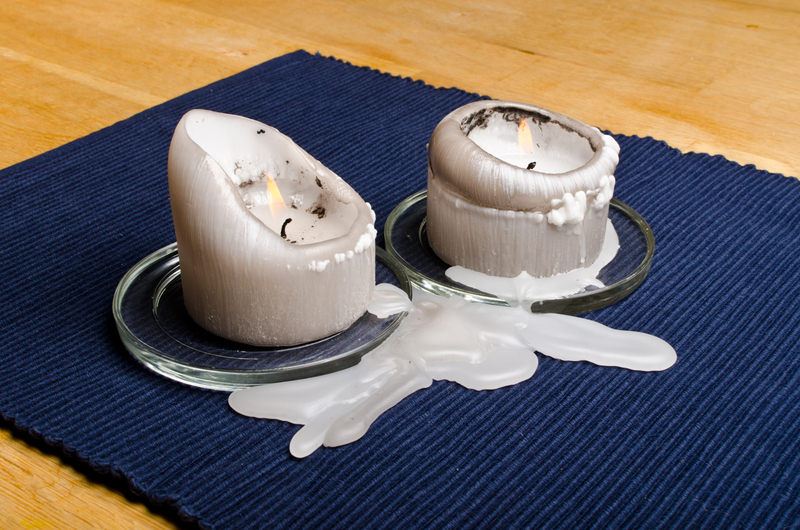A Guide to Protecting Your Bathroom from Mold Growth
Posted on 05/06/2025
A Guide to Protecting Your Bathroom from Mold Growth
Struggling with mold in your bathroom? You're not alone. Bathrooms are one of the most susceptible places for mold growth due to their constant exposure to moisture and humidity. Left unchecked, mold can cause health issues, damage your home, and create unpleasant odors. In this comprehensive guide, we'll cover everything you need to know about protecting your bathroom from mold, including causes, effective cleaning routines, ventilation strategies, and preventive tips to keep your bathroom mold-free.
Understanding Mold Growth in Bathrooms
Mold is a type of fungus that thrives in damp, warm environments with poor ventilation--making bathrooms a prime location for its growth. Mold spores are ever-present in the air and need only moisture and organic material to begin multiplying. Recognizing why mold develops in bathrooms is the first step towards prevention.
Common Causes of Mold in Bathrooms
- Poor Ventilation: Steam from showers and baths increases humidity and condensation, which, when not vented out, creates the perfect conditions for mold to thrive.
- Leaky Fixtures: Dripping faucets, showerheads, or pipes add unnecessary moisture, aiding in mold formation.
- Standing Water: Water left on surfaces (especially behind toilets and under sinks) offers a breeding ground for mold.
- Lack of Sunlight: Bathrooms with limited natural light are at higher risk since UV rays help prevent spore growth.
- Organic Surfaces: Materials such as grout, drywall, and wood trim provide food sources for mold.

Health Risks Associated With Bathroom Mold
Mold isn't just an eyesore; it poses serious health risks, especially to individuals with allergies, asthma, or weakened immune systems. Common symptoms of mold exposure include:
- Respiratory issues (coughing, wheezing, congestion)
- Skin irritation or rashes
- Eye irritation
- Headaches and fatigue
For these reasons, it's vital to learn how to prevent bathroom mold growth and keep your bathroom safe and hygienic.
10 Proven Strategies to Prevent Mold Growth in Your Bathroom
Follow these practical tips and techniques to significantly reduce the risk of mold infestations in your bathroom.
1. Improve Bathroom Ventilation
The most important step in protecting your bathroom from mold is ensuring adequate ventilation. Moisture needs to escape following showers, baths, or cleaning.
- Install an Exhaust Fan: Choose a fan rated for your bathroom size and run it during and at least 15-20 minutes after showering.
- Open Windows: When possible, crack a window to increase airflow and allow humidity to escape.
- Keep the Door Open: After using the bathroom, leave the door open to let fresh air in.
2. Eliminate Water Leaks
Even minor leaks contribute to persistent moisture. Inspect your bathroom regularly for drips or pooled water.
- Check Under Sinks: Examine pipes and connections for wetness.
- Replace Worn Seals: Update gaskets, caulk, or washers whenever you spot signs of leakage.
- Fix Dripping Faucets: Don't ignore steady drips--they waste water and increase humidity.
3. Dry Wet Surfaces After Use
Mold can begin to grow in as little as 24-48 hours on wet surfaces. After using the shower or sink:
- Wipe down tiles, glass, and counters with a towel.
- Use a squeegee on shower walls and doors.
- Hang bathmats and towels to dry rather than leaving them on the floor.
This simple step greatly reduces the likelihood of mildew and mold in bathrooms.
4. Clean Grout and Tiles Regularly
Grout is porous, trapping moisture and soap scum--prime conditions for mold. Maintain a regular cleaning schedule:
- Use a mold-killing cleaner or a mix of vinegar and water weekly.
- Scrub grout lines with a brush to remove any buildup.
- Dry surfaces thoroughly after cleaning.
5. Use Mold-Resistant Finishes
If you're remodeling or making updates, opt for materials that discourage mold growth:
- Mold-resistant drywall (green board) and water-resistant wall panels
- Mildew-resistant paint or tile grout
- Ceramic or porcelain tiles instead of wood or carpeted bathroom floors
6. Control Humidity Levels
Aim to keep bathroom humidity below 50%. If your home is naturally humid:
- Use a portable dehumidifier in or near the bathroom.
- Check and clean exhaust fans frequently to ensure they're effective.
- Monitor humidity with a simple digital hygrometer.
7. Remove Clutter & Keep Surfaces Clear
Crowded shelves, baskets, and personal care products block airflow, trap moisture, and conceal mold. Organize and declutter for better cleaning access and circulation.
8. Seal Grout Lines and Joints
Waterproofing exposed seams and joints prevents water penetration behind walls and under floors.
- Reapply grout sealer every year or as recommended by the manufacturer.
- Re-caulk shower and tub edges as soon as you spot peeling or cracks.
9. Opt for Quick-Drying Bath Linens
Choose synthetic, quick-drying towels and rugs for your bathroom. Natural fibers take longer to dry and can become breeding grounds for mold.
10. Regularly Inspect for Signs of Mold
Frequent inspections help spot mold at an early stage:
- Look for discoloration, especially in tile grout or caulking.
- Check for musty odors.
- Examine under sinks and behind toilets for hidden moisture or mold.
If you see black, green, or orange spots--or smell a persistent earthy scent--it's time for a deep clean or to call a professional if the infestation is severe.
How to Clean and Remove Bathroom Mold Effectively
Even with the best preventive measures, you might occasionally spot mold in your bathroom. Here's the step-by-step guide to removing bathroom mold:
Safely Remove Small-Scale Mold
- Ventilate: Open windows and run the exhaust fan.
- Wear Protection: Use gloves and possibly a mask to avoid touching or inhaling spores.
- Mix a Cleaner: Combine one part bleach or hydrogen peroxide with three parts water, or use a commercial mold remover.
- Apply the Solution: Spray or wipe the solution onto affected areas. Allow it to sit for 10-15 minutes.
- Scrub: Use a stiff brush to remove mold from grout and hard surfaces.
- Rinse and Dry: Wipe surfaces with clean water and dry with a towel.
Always test cleaning products in an inconspicuous area first.
When to Call a Professional
If mold covers more than 10 square feet, or if it's inside walls, floors, or the ceiling, you should consult mold remediation specialists. Extensive growth may indicate hidden water damage or ventilation failures that need professional attention.
Naturally Preventing Mold in Your Bathroom
Want to avoid harsh chemicals? Consider these natural ways to prevent bathroom mold:
- Vinegar: Spray undiluted white vinegar on tiles and grout to kill mold spores and prevent regrowth.
- Baking Soda: Mix with water to create a scrubbing paste that helps clean and deodorize surfaces.
- Essential Oils: Tea tree oil and eucalyptus oil contain antifungal properties--add a few drops to your cleaner or water spray.
These eco-friendly methods are safe for most bathrooms and can be used in addition to standard cleaning protocols.
Long-Term Tips for Mold-Free Bathrooms
- Educate Family Members: Teach everyone to use the fan, wipe down surfaces, and hang up wet linens.
- Upgrade Bathroom Fixtures: Consider touchless faucets, high-efficiency fans, and smart humidity sensors for modern bathrooms.
- Install Mold-Resistant Accessories: Shower curtains, bath mats, and even wallpaper now come in mildew-resistant versions.
- Schedule Deep Cleanings: Plan for monthly deep cleans targeting grout, behind toilets, and under sinks.

Frequently Asked Questions About Bathroom Mold Prevention
Is it possible to have a completely mold-proof bathroom?
Although it's difficult to make a bathroom 100% mold-proof, by reducing moisture and increasing airflow, you can drastically minimize the risk of mold in bathrooms.
How often should I clean my bathroom to prevent mold?
Aim to wipe down surfaces after every use and perform a thorough clean at least once per week. Regular maintenance keeps humidity and organic buildup under control.
Are natural mold removers as effective as bleach?
Natural cleaners like vinegar and tea tree oil can be effective for preventing and removing light mold growth. For heavy infestations, chemical products or professional services may be required.
Can indoor plants help with mold in the bathroom?
While some plants can help absorb humidity, their soil can also harbor mold, so choose wisely and maintain proper airflow.
Conclusion: Keep Your Bathroom Mold-Free for a Healthier Home
Protecting your bathroom from mold growth is an ongoing process that combines good habits, proper maintenance, and smart design choices. By managing moisture, cleaning regularly, and using mold-resistant materials, you can create a healthier, fresher bathroom for your household.
If you ever encounter a persistent or extensive mold issue, don't hesitate to call in professional help to ensure your bathroom stays safe and inviting for everyone who uses it.
Related Keywords: bathroom mold prevention, stop shower mold, how to prevent mold in bathroom, keep bathroom mold-free, bathroom mildew solutions, protect bathroom from mold, prevent mildew in bathroom




